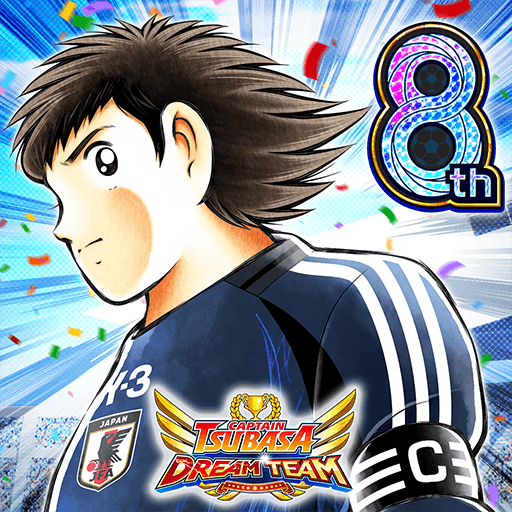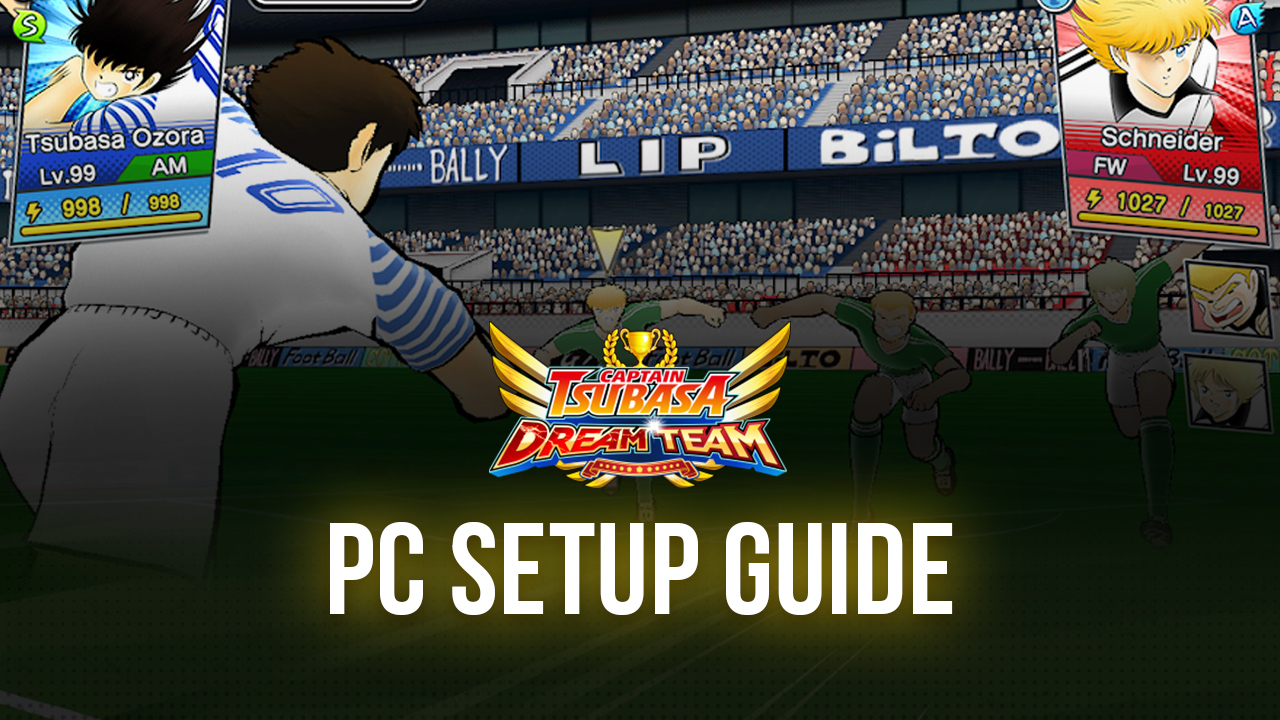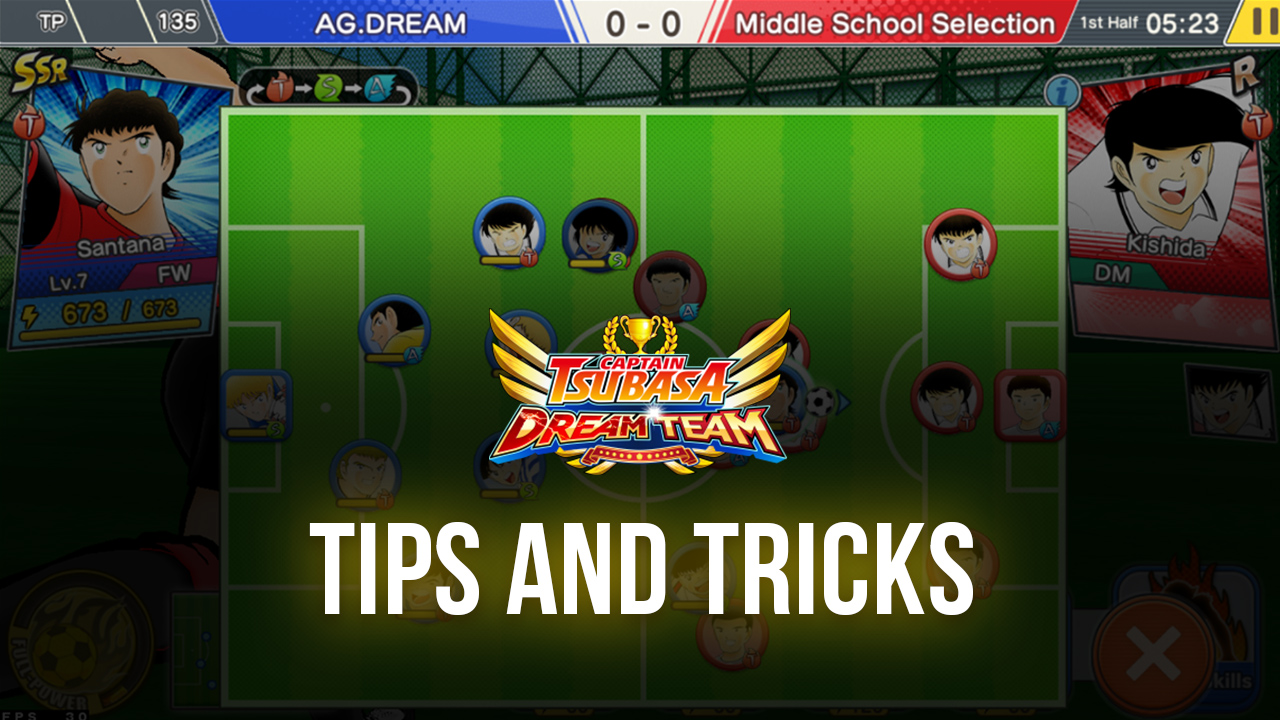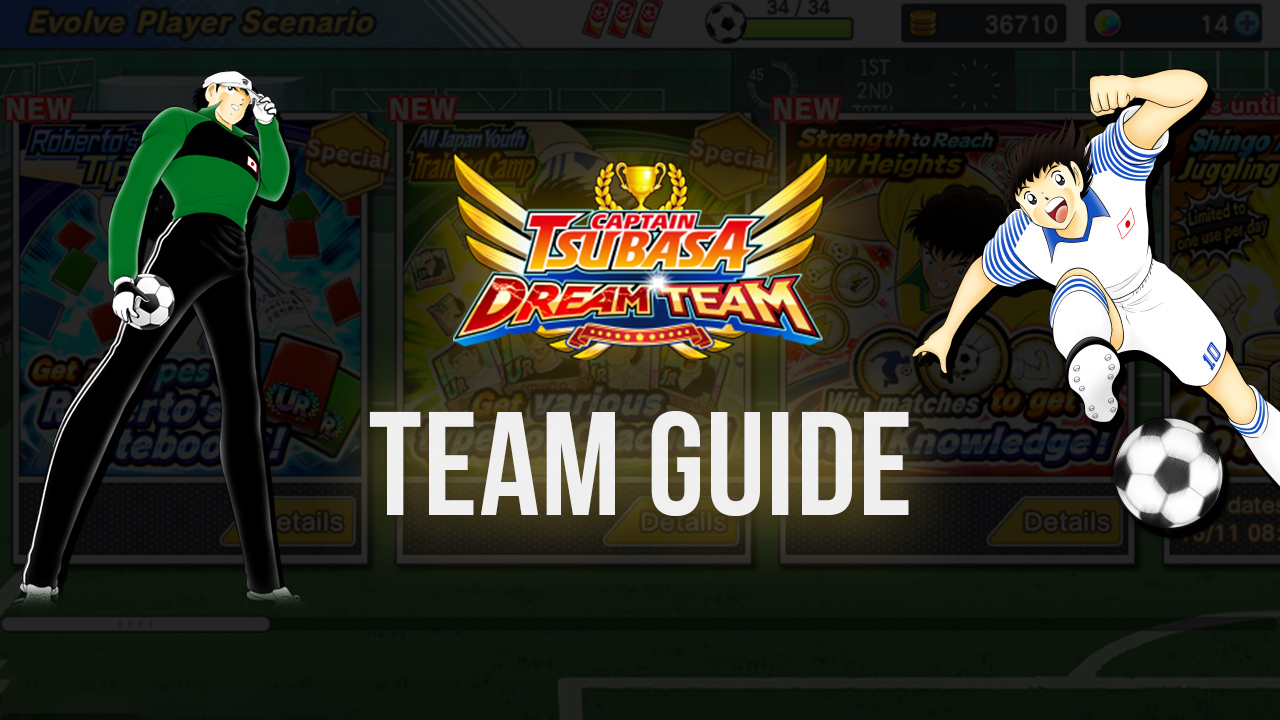A Guide to Matches in Captain Tsubasa: Dream Team on PC
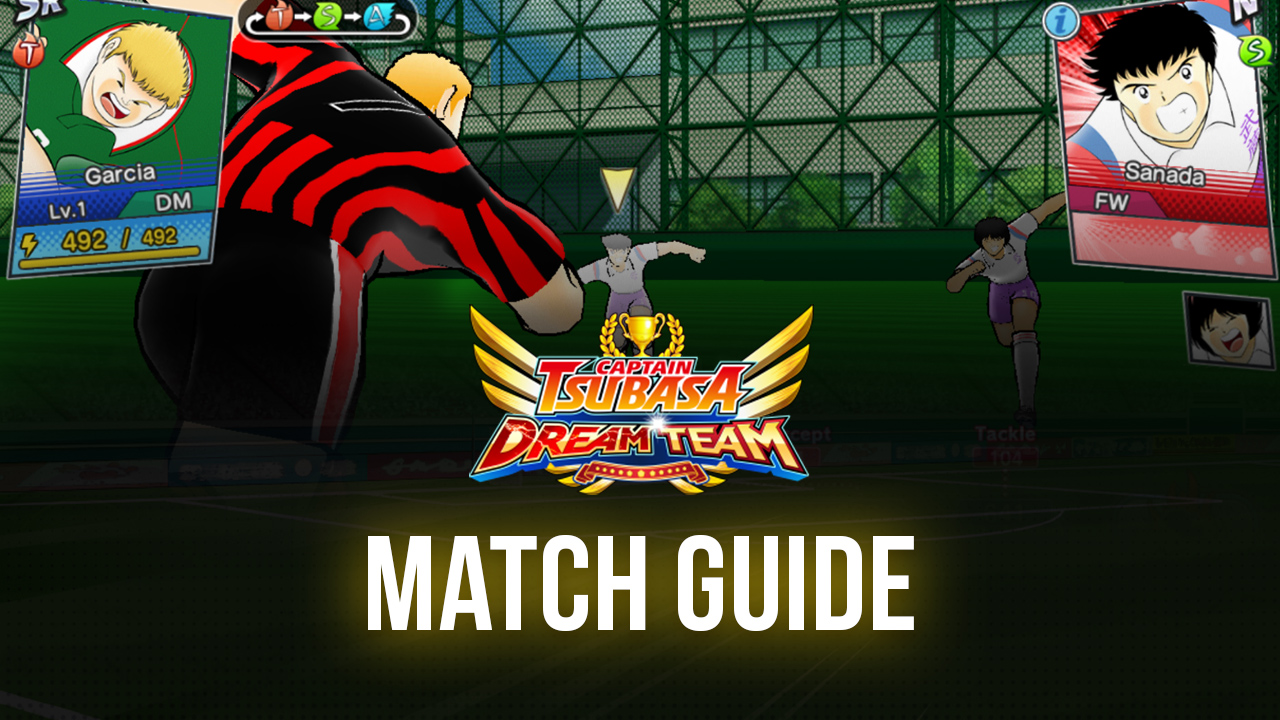
Football matches, whether friendly or competitive, are the stepping stones to bringing your dream team to the top of the leaderboards. Unlike traditional football video games like the FIFA franchise, Captain Tsubasa: Dream Team is more of a strategy game where factors such as formations, game plans, and raw team strength determine which team gets the most goals. As such, it is crucial to learn these mechanics if you want to make your dream team’s dreams come true.
This game guide collates the basics of playing matches in Captain Tsubasa: Dream Team. We’ll start off with the precedent of every match, the planning.
Prepare a Plan
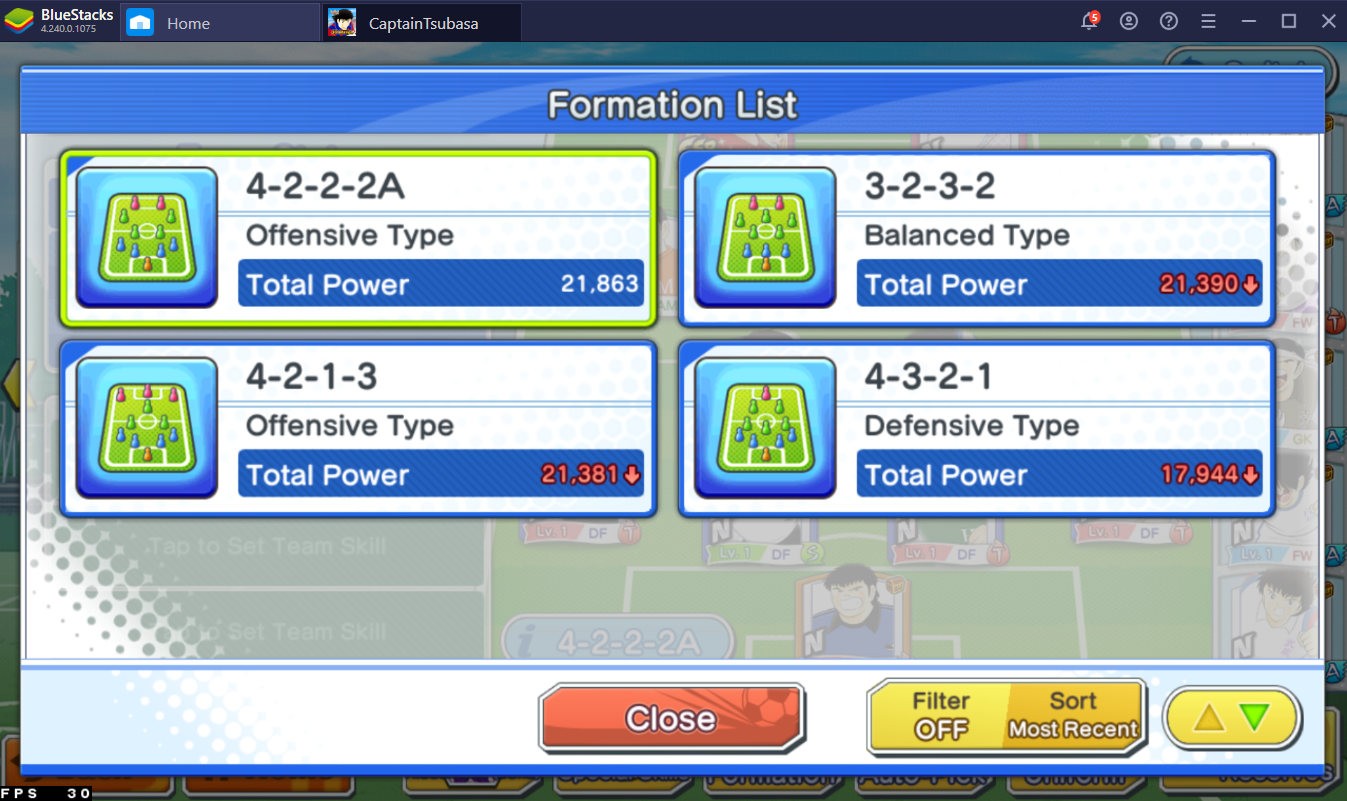
There are several formations that your team can enact and each formation distributes the players to specific positions that cater to a playstyle. For instance, a defensive formation clusters midfielders and defenders tightly together to fortify the team’s goal. On the contrary, an offensive formation (the game offers you two variations) is more open and contains more forwards who are responsible for scoring goals.
Pick a formation based on the current situation. Is the enemy powerful or at least of equal level? If so, then it is probably best to initiate a defensive formation. Is the enemy weak? Then, by all means go for an offensive formation and focus on achieving goals. If you are undecided, perhaps a balanced formation would still be enough to secure a victory.

Each player in your team has a certain role of which they are good at. Their role is indicated on the bottom-right of their icon. It is important that you assign players (and make sure they are the best ones in the roster) to positions that are appropriate to the role they excel at. For example, always place a forwarder (FW) at the front-most part of the formation because this will help them achieve goals for the team. Placing players in roles they are not skilled at will severely decrease their effectiveness during the match so avoid doing this.
Below is a list of the player types found in the game:
FW – forward
AM – attacking-midfielder
DM – defending-midfielder
DF – defender
GK – goalkeeper
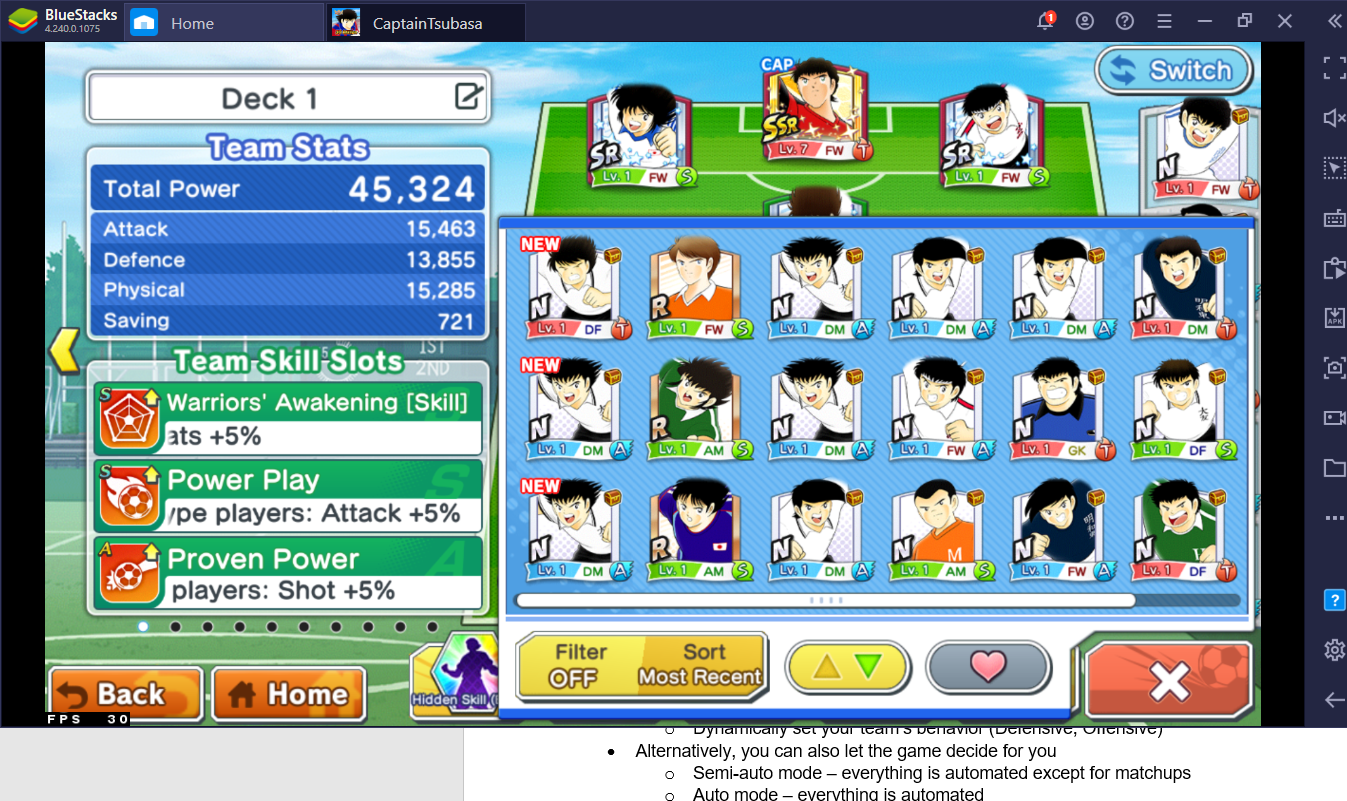
It is handy to assign players as substitutes before a match to serve as replacements for exhausted players. However, do not confuse substitutes with reserves. Substitutes are the players that are vertically listed on the right side of the screen and they can be deployed during half-times. Meanwhile, reserves can be accessed through a separate menu on the bottom-left and they are not present during a match unless they are assigned a role in the formation or as a substitute.
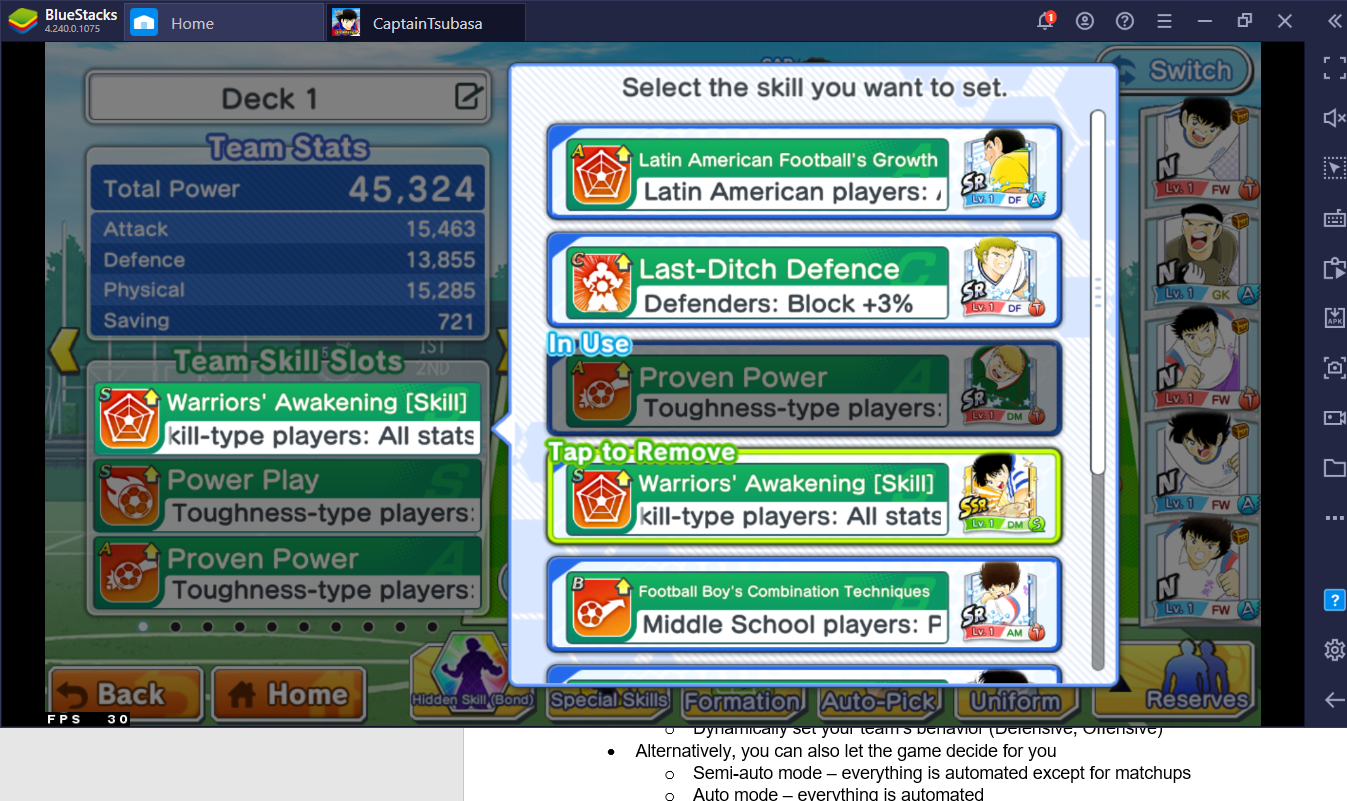
Team skills provide stat bonuses to your team so don’t forget to place up to three skills before a match begins. Keep in mind that a team skill can only benefit players who fall under the category specified in the skill’s description. For instance, a certain team skill may give a 5% stat boost but only to midfielders.

As you tweak your team’s formation and positions, always keep an eye on Total Power, which gauges their total strength. Under Total Power, you can also view the rating of your team’s Attack, Defence, Physical, and Saving power and this is useful for when you want to meticulously craft a strategy that’s focused entirely on a specific playstyle.
Spectate or Interfere

Part and parcel of every match will have you observing the match with a top-down view of the action. You can actually interfere in the match by controlling your players’ behaviors and actions. When one of your players has the ball, you can click on another one to pass the ball (assuming it would not get caught by the opponent). You can also click the button on the bottom-right of the screen to make the player do a specific action. This may be hard to do quickly with a mouse but fortunately BlueStacks’ Macros feature allows you to bind a separate key to do the same action, effectively making it easier.
Instead of meddling with the match, you can instead do nothing and spectate the match. The game provides Manual, Semi-auto, and Auto modes. Manual mode simply means that every action in the match must be controlled by you. Semi-auto will allow the game to make the decisions for you except during matchups (more on these later). Auto will automate everything. The speed of the automation can be boosted and this will conclude matches more quickly.
Aside from control options, you can also change your team’s strategy in real-time. This is useful for situations wherein you need to change plans to retain the advantage.
It is up to you whether or not you spectate or interfere in a match. However, we recommend manually controlling the match if your team is against a strong one because defeat is more likely if you just let the game make decisions for you. If you are playing against very weak enemies (such as those in the early parts of the story mode), then it is completely fine to fully automate the match because the chances of winning are overwhelmingly high.
You would not really spend plenty of time observing the match because every once in a while, whoever has the ball will go face-to-face with the opponent. Situations like these initiate matchups.
Winning Matchups
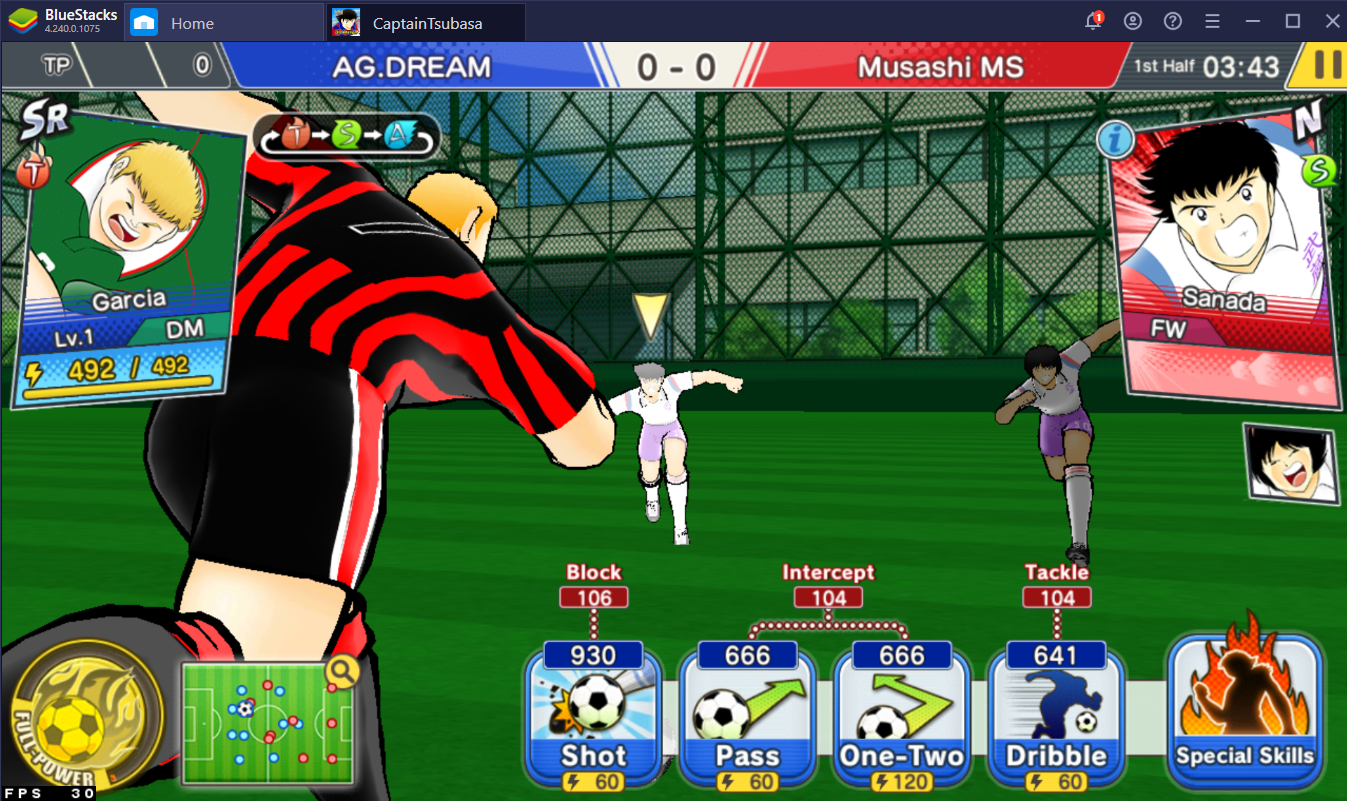
When matchups occur, you need to choose between several commands that may let you win in the situation. Depending on who has the ball, the commands may be to dribble, block, shoot, and the like. One of the things that can help you make your decision is the amount of power a certain command has and this is indicated by the numbers on the top of each of the commands. Obviously, the higher power will have a higher chance of success. You can also view a map of the field to know where your player is and whether or not they are in a compromised spot.
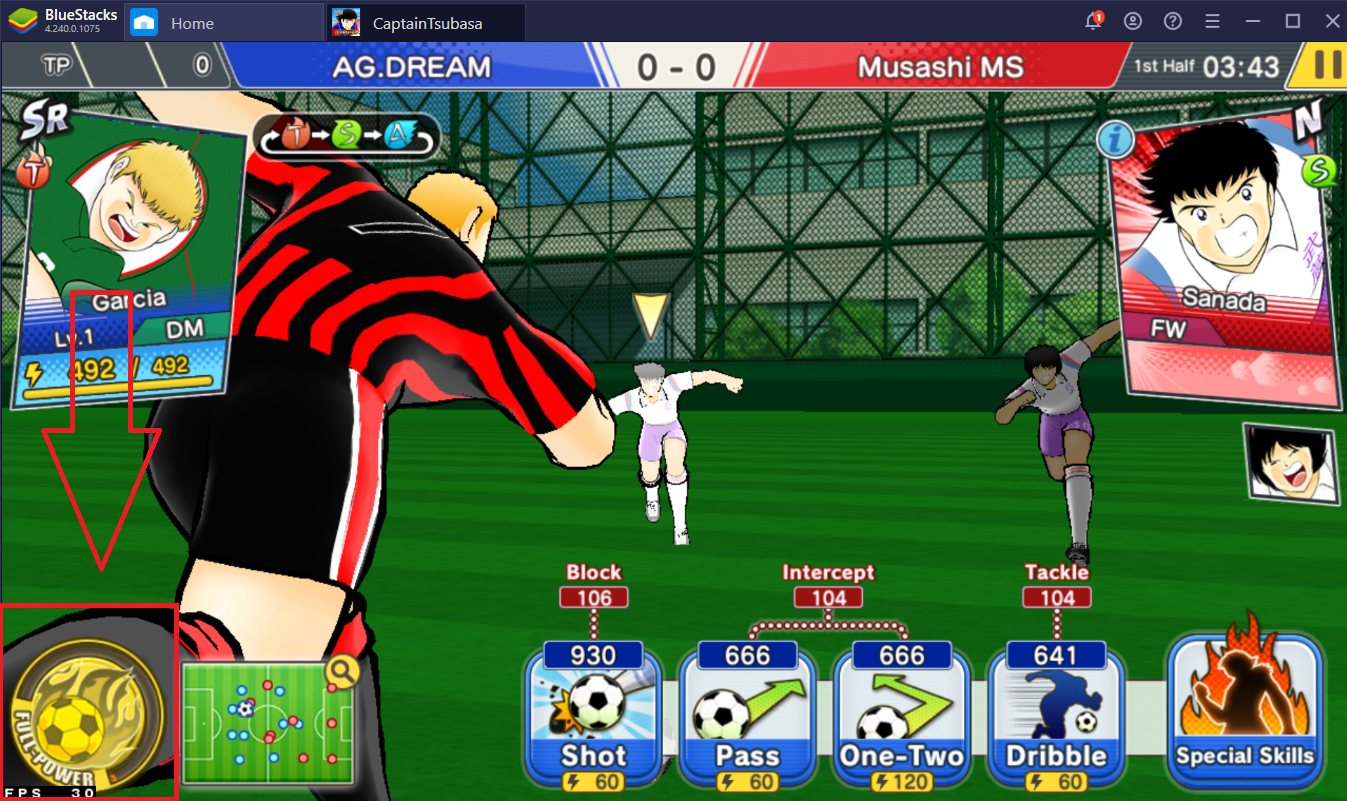
Take note that commands will drain the affected player’s stamina. The more that a player is placed in matchups, the more their stamina will drain. A player with a completely drained stamina will be less effective in the match and will be more likely to fail in future matchups. You can activate Full Power Football, which lessens the stamina used up in matchups, to mitigate this. Full Power Football is gauged with a meter on the bottom-left of the screen and this fills up as you score goals and win matchups.
Commands each have a strength and weakness and you need to take this into account in your decision-making. Refer to the table below:
| Tackle | IS STRONG AGAINST | Dribble |
| Intercept | Pass | |
| Block | Shoot | |
| Clear | Trap |
Note that the opposite is true. For instance, Dribble is automatically weak against intercept.
Like commands, players also have their own strength and weakness and this is determined by their player-type. The player-type is the colored letter that appears besides a player’s icon. The table below shows the correlation of each type:
| Type | IS STRONG AGAINST | IS WEAK AGAINST |
| Toughness (T) | Skill | Agility |
| Agility (A) | Toughness | Skill |
| Skill (S) | Agility | Toughness |
Making the best decision during matchups can be quite tough. However, if you want the quick-and-easy but costly solution, then activate your player’s Special Skill.
Use Special Skills to Gain Advantage

Special Skills are powerful commands that take up more stamina. Despite this, activating Special Skills can put your team at a great advantage so it is important to use this when the time is right. Take note however, certain Special Skills require unique conditions in order to be activated. For example, one skill requires the presence of another player.
Football matches in Captain Tsubasa: Dream Team are centered on good strategy-making and wise decision-making. With this, it is optimal to invest time in knowing and studying the elements of not only your match but also your team and their structure. This is an unescapable prerequisite to achieving the dream of the team.

